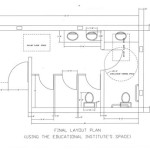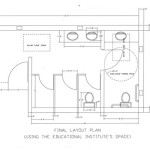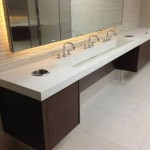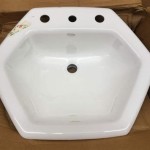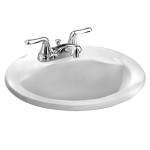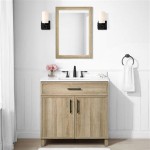What's The Best Paint To Use For Bathroom Ceilings?
Selecting the appropriate paint for a bathroom ceiling presents a unique challenge compared to painting other areas of a home. Bathrooms are inherently humid environments, frequently exposed to steam and moisture from showers, baths, and sinks. This elevated humidity can wreak havoc on paint, leading to peeling, blistering, and the growth of mold and mildew. Therefore, the best paint for a bathroom ceiling must possess specific properties that resist these damaging effects and maintain a clean, aesthetically pleasing finish for an extended period.
Several factors need careful consideration when choosing bathroom ceiling paint. The type of paint base (latex or oil-based), the level of sheen, and the presence of mold-inhibiting additives are all critical determinants of the paint's performance in a humid environment. Furthermore, proper surface preparation before painting is paramount to ensure optimal adhesion and long-term durability. Neglecting this step can significantly reduce the lifespan of even the best-suited paint.
This article will delve into the characteristics of various paint types, exploring their suitability for bathroom ceiling applications. It will also discuss the importance of primers, additives, and surface preparation techniques to help homeowners and professionals make informed decisions and achieve lasting results. Understanding these factors will contribute to a bathroom ceiling that remains resistant to moisture and maintains its appearance for years to come.
Understanding Paint Bases: Latex vs. Oil-Based
The foundation of any paint lies in its base, which dictates its properties and application characteristics. Two primary paint bases are commonly available: latex (water-based) and oil-based paints. For bathroom ceilings, latex paints are generally the preferred choice due to several advantages over their oil-based counterparts.
Latex paints exhibit superior flexibility compared to oil-based paints. This flexibility allows them to expand and contract with the ceiling surface as temperature and humidity fluctuate within the bathroom. This ability to adapt reduces the likelihood of cracking and peeling, which are common issues in moisture-prone environments. Additionally, latex paints are more breathable, permitting moisture vapor to escape through the paint film instead of becoming trapped underneath, which can lead to blistering and paint failure.
Another significant advantage of latex paints is their ease of application and cleanup. They are water-soluble, meaning brushes and rollers can be easily cleaned with soap and water, eliminating the need for harsh solvents. Furthermore, latex paints typically have lower volatile organic compound (VOC) levels than oil-based paints. VOCs are emitted as the paint dries and can contribute to indoor air pollution. Low-VOC or zero-VOC latex paints are readily available and are a healthier choice for indoor environments, especially in enclosed spaces like bathrooms.
While oil-based paints offer excellent durability and resistance to staining, their inflexibility and slower drying time make them less suitable for bathroom ceilings. The tendency to crack and peel under fluctuating humidity conditions, along with the higher VOC content and more demanding cleanup process, generally outweigh their benefits in this specific application.
Choosing the Right Sheen Level
The sheen level of a paint refers to the amount of light it reflects. Different sheen levels offer varying degrees of durability, washability, and aesthetic appeal. For bathroom ceilings, the ideal sheen level strikes a balance between moisture resistance and ease of maintenance. Higher sheen levels are generally recommended for bathrooms due to their enhanced ability to repel moisture and withstand frequent cleaning.
Semi-gloss and gloss paints are the most reflective sheen levels. They are highly moisture-resistant and easy to clean, making them suitable for areas prone to splashes and condensation. However, their high reflectivity can also accentuate imperfections in the ceiling surface, such as uneven textures or patched areas. Therefore, careful surface preparation is crucial when using these sheen levels.
Satin and eggshell paints offer a lower sheen level compared to semi-gloss and gloss. They still provide good moisture resistance and are easier to clean than matte paints, but they are less reflective and less likely to highlight imperfections. These sheen levels offer a good compromise between durability and aesthetic appeal for bathroom ceilings.
Matte and flat paints have the lowest sheen levels and offer minimal reflectivity. While they excel at concealing imperfections, they are not recommended for bathroom ceilings due to their poor moisture resistance and difficulty in cleaning. Water stains and mildew are more likely to develop on matte surfaces, making them a less practical choice for humid environments.
In summary, selecting a semi-gloss or satin paint provides the best balance of moisture resistance, cleanability, and aesthetic appeal for bathroom ceilings. The choice between these two sheen levels often comes down to personal preference and the condition of the ceiling surface. If the ceiling is relatively smooth and free of imperfections, a semi-gloss finish can be used. If imperfections are present, a satin finish may be a better choice to minimize their visibility.
The Importance of Mold-Inhibiting Additives and Primers
Even with the right paint base and sheen level, bathroom ceilings are still susceptible to mold and mildew growth due to the persistent humidity. To combat this issue, incorporating mold-inhibiting additives into the paint or using a paint specifically formulated with these additives is highly recommended. These additives work by creating an environment that is inhospitable to mold and mildew, preventing their growth on the painted surface.
Various types of mold-inhibiting additives are available, including fungicides and mildewcides. These substances are typically added to the paint during the manufacturing process, ensuring even distribution throughout the paint film. When selecting a paint for a bathroom ceiling, look for products that explicitly state they contain mold and mildew resistance properties.
In addition to using mold-resistant paint, applying a primer coat before painting is crucial for several reasons. Primers create a uniform surface for the paint to adhere to, improving its adhesion and preventing peeling. They also seal porous surfaces, such as drywall or plaster, reducing the amount of paint required for complete coverage. More importantly, specialty primers are available that offer mold and mildew resistance. These primers contain additives that further enhance the protection against microbial growth, providing an extra layer of defense in humid environments.
When selecting a primer for a bathroom ceiling, opt for a product specifically designed for use in moisture-prone areas. These primers are typically formulated with mold-inhibiting properties and offer excellent adhesion to various surfaces. Before applying the primer, ensure the ceiling is clean, dry, and free of any loose paint or debris. Addressing any existing mold or mildew growth with a suitable cleaning solution is also essential before priming.
Using a combination of mold-resistant primer and paint provides the most comprehensive protection against mold and mildew growth on bathroom ceilings. This approach significantly reduces the risk of unsightly stains and potential health hazards associated with microbial contamination, ensuring a clean and healthy bathroom environment.
Proper ventilation is a critical factor not discussed above and must be considered along with mold-inhibiting additives. Without adequate ventilation, mold and mildew will likely return.

Best Paint For Bathroom Ceilings

Ceiling Paint For Bathroom Home Painters Toronto

The Best Paint For Bathrooms Solved Bob Vila

Ceiling Paint For Bathroom Prestige Painting Gta

Ceiling Paint For Bathroom Prestige Painting Gta

Should I Use Flat Paint In A Bathroom Williams Painting

Ceiling Paint For Bathroom Prestige Painting Gta

25 Beautiful Bathroom Ceiling Ideas

Best Paint For Bathroom Ceilings

Best Type Of Paint For Bathrooms 2024 Guide Forbes Home
Related Posts
